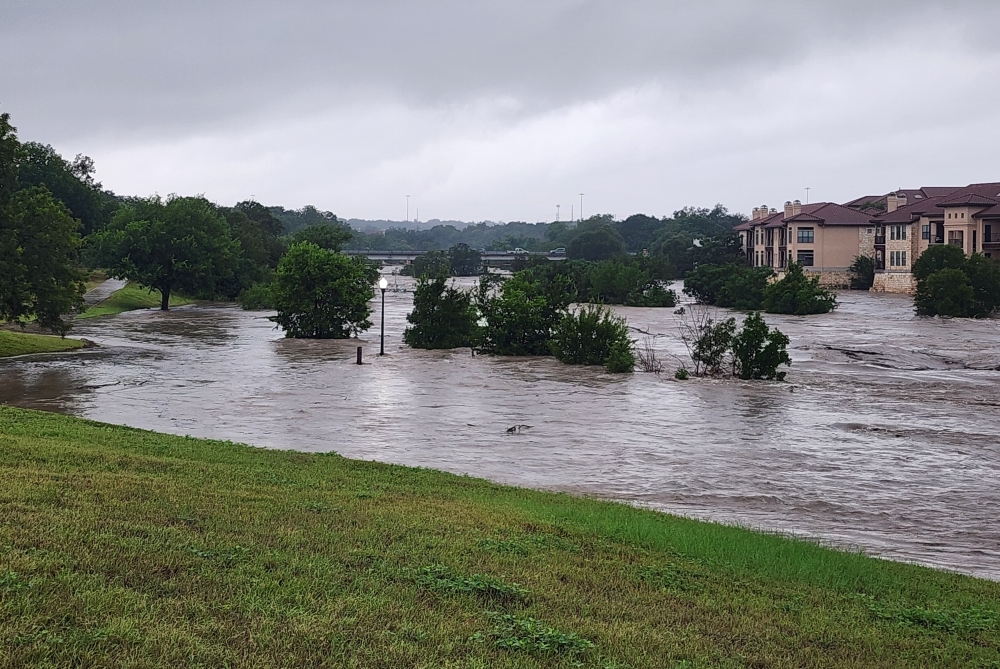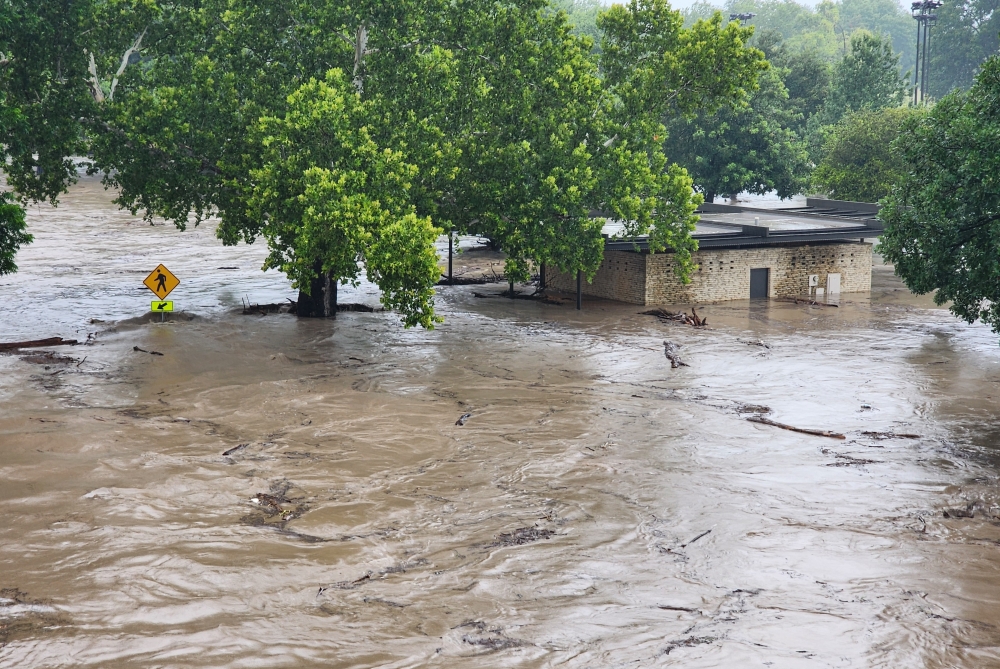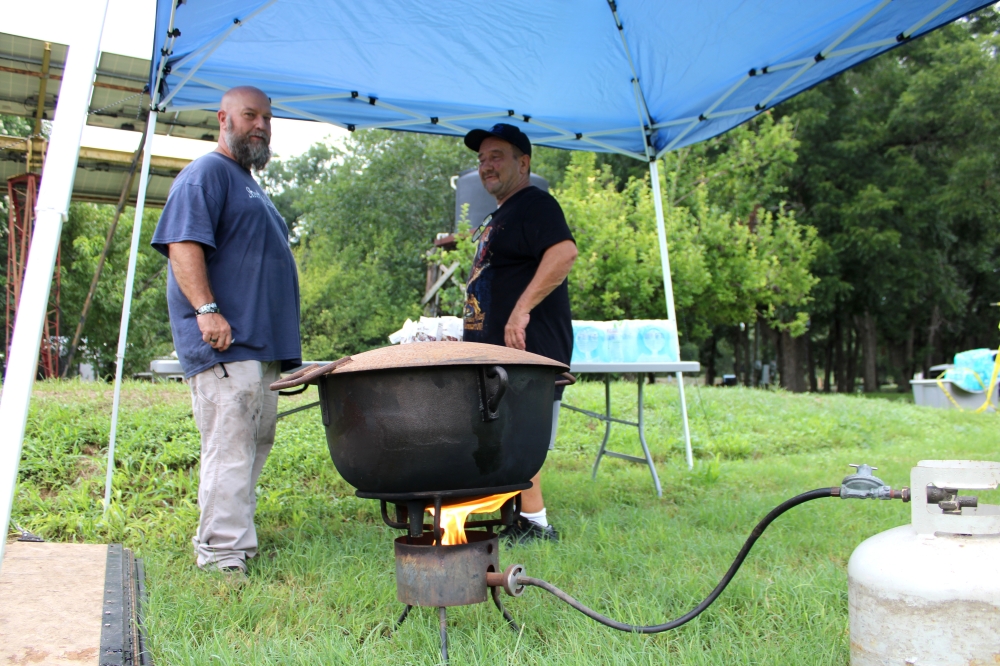Georgetown resident Debbie Spivey went to San Gabriel Park for an early morning walk July 5. As she was making her way toward Blue Hole Park, she began documenting the San Gabriel River rise.
“While I was videoing, you could see the water coming towards my feet,” Spivey said. “I took the high ground every chance I got.”
Spivey witnessed the beginning of a flooding event that, in Williamson County alone, killed three people, damaged more than 100 buildings, overturned mobile homes, uprooted trees and destroyed lampposts.

Over the course of about six hours on July 5—from 5:10 a.m. to 11:25 a.m.—the South Fork San Gabriel River rose from 4.01 feet to 37.36 feet, data from the U.S. Geological Survey showed.
Damage across the Georgetown area offers a glimpse into the devastation seen across Central Texas as extreme rainfall resulted in the Guadalupe River also surging beyond its banks July 4. During a July 23 panel at the Capitol, officials said two people remain missing and at least 137 people have died.
In the weeks following the flood, Central Texans are grieving as they navigate how to find aid and how to help one another.
What happened
The flooding was caused by heavy rainfall throughout parts of the Hill Country over the holiday weekend.
Officials with the Georgetown Police Department and the Williamson County Sheriff’s Office advised residents of apartment complexes and mobile home parks near the river to evacuate the morning of July 5.
The city also evacuated the Georgetown Animal Shelter, relocating all the animals to the Williamson County Regional Animal Shelter, as well as other nearby businesses, homes and buildings.

Crews working in Williamson County saved 26 people during 10 rescue operations July 5, and the Hope House—a home near Liberty Hill for children with disabilities—was evacuated by helicopter with assistance from Camp Mabry and the Texas National Guard.
Of the three Williamson County residents who died during the floods, two died as a result of rushing water sweeping cars off the road at low-water crossings, Williamson County Judge Steve Snell said. A structure from Hope House being washed away resulted in the third death, he said.
“I do believe the county as a whole did a fantastic job,” said Bill Zito, senior director of emergency services for Williamson County, during a July 6 press conference. “We have minimal lives lost because of it.”
What’s being done
President Donald Trump amended a federal disaster declaration order to include Williamson County on July 11, making residents eligible for the Federal Emergency Management Agency’s Individual Assistance program.
The IA program can help residents with home repairs, temporary housing, property damage and more, according to the agency’s website.
A FEMA Disaster Recovery Center is open Monday-Sunday from 8 a.m.-7 p.m. at 3189 SE Inner Loop, Georgetown, until Aug. 10 to provide in-person support for homeowners, renters and business owners, according to a county news release.
The Williamson Central Appraisal District will also send a postcard to properties that may have been damaged with information on how to file for temporary disaster-related property tax exemptions, WCAD Chief Appraiser Alvin Lankford said in an email.
As of July 16, 65 homes and 74 public structures were destroyed or damaged in Williamson County. On July 11, county commissioners approved up to $200,000 in county-funded vouchers for people with destroyed or damaged homes, Hope House and the city of Liberty Hill.
A week later, Williamson County was added to FEMA’s Public Assistance program, which helps local governments recover from major disasters. The cost to repair damage to public property in the county is estimated to be $25 million, according to officials with the Williamson County Office of Emergency Management.
All 13 of the county’s damaged roads were expected to receive temporary fixes and reopen by July 18, as of press time. Permanent repairs will be ongoing through October, a county official said.
Resources for affected residents include:
- The Texas Department of Emergency Management: https://damage.tdem.texas.gov
- Williamson County: www.wilcotx.gov/1758/july-5-flood-recovery
- Crisis Cleanup hotline: 512-201-4814
- FEMA disaster assistance: www.disasterassistance.gov
Snell said people began calling the county to ask how they can help affected individuals almost immediately.
Jason Hale with nonprofit Street Ministries 25:40 of Rockdale was outside Shady River RV Resort the morning of July 7 providing food, water and hygiene products to people in need.
“We’re really just out here trying to help and serve and do what we can,” Hale said.

Clements advised residents to find an organized effort to volunteer with.
“It can be dangerous out there, so please be part of an organized effort that’s already underway,” Clements said.
The city of Georgetown is accepting volunteers to help clean up San Gabriel Park before it reopens. People ages 13 and up may sign up here to volunteer from:
- 9-11 a.m. July 29
- 4-6 p.m. July 31
As of press time, the Central Texas Community Foundation WilCo Cares flood relief fund is more than halfway to its $1 million goal to support flood victims.






